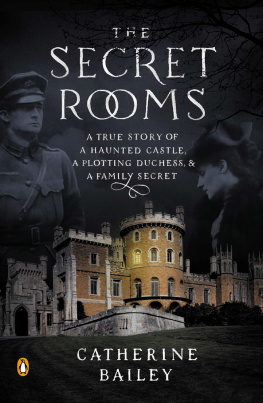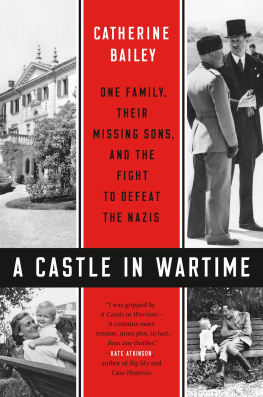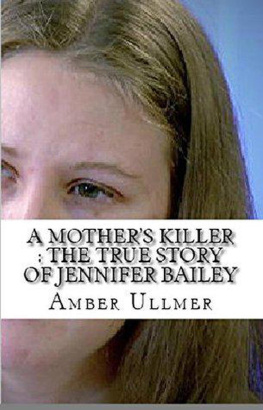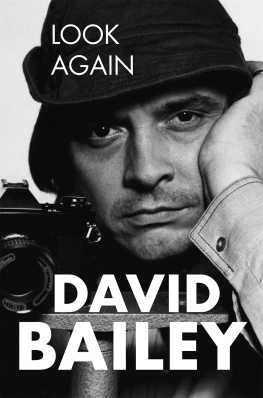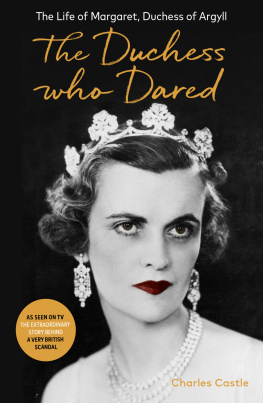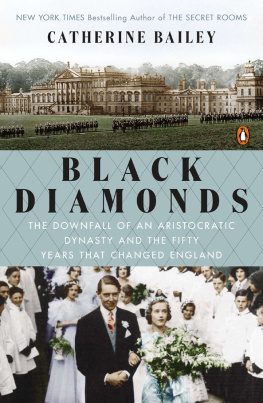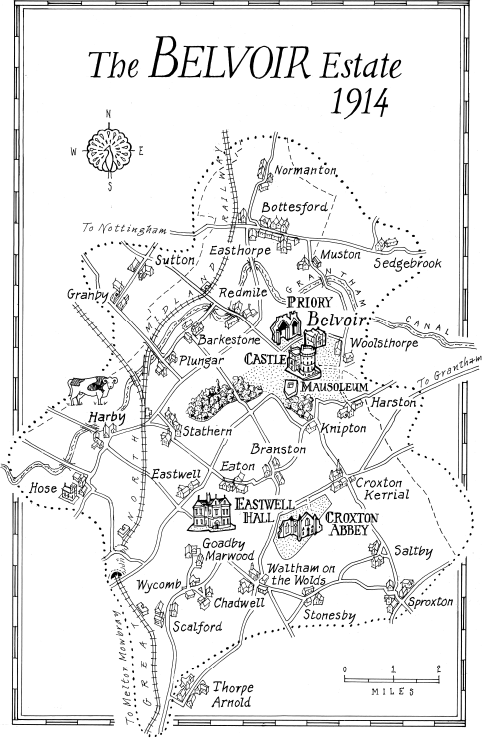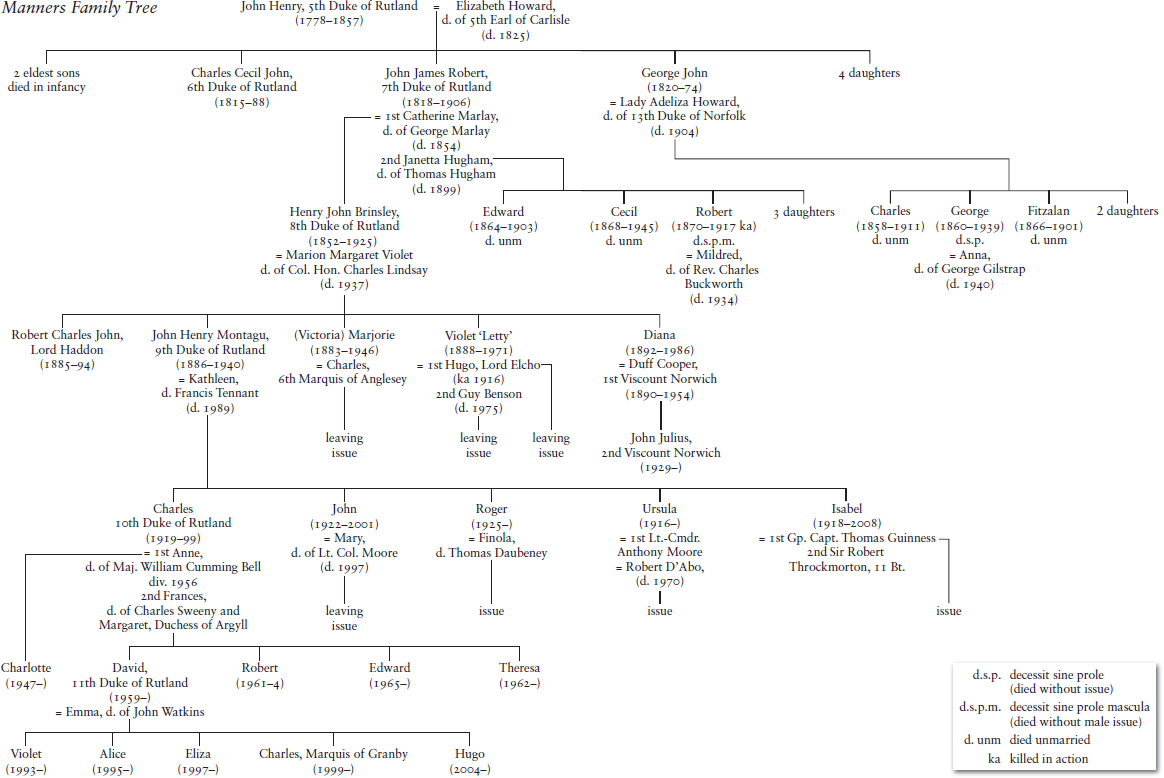Praise for The Secret Rooms
Not all adventures in the archives are as thrilling to the reader as the researcher, but here Baileys gift for suspense, which ends each chapter with a question, carries us over any threatened longueurs.
The Times Literary Supplement (London)
Gripping. Reads like the best kind of mystery story. It is a tale of mistresses and heirlooms, cowardice and connivance.
The Sunday Times (London)
Compelling. A remarkable piece of research which throws a bright shaft of light on powerful people, hypocrisy, and the First World War.
The Guardian (London)
The mysterious death of a duke and a castle full of treacherous goings-on make The Secret Rooms a gripping read for fans of Downton Abbey. As thrilling as any fiction, Catherine Bailey uncovers the darkest depths of a family with plenty of skeletons in its closet.
Good Housekeeping (UK)
Astonishing, jaw-dropping, superb. Horrifying.
The Sunday Telegraph (London)
Extraordinary, edge-of-the-seat, enthralling. The plot is thick with destroyed documents, decadent aristocracy, betrayed honor, and curses.
Metro
Wonderful... Has everything: family intrigue and hatred, love and war, witches curses, eccentricity, snobbery, and a series of shocking secrets. No reader can finish it unmoved.
Sunday Express (London)
Teems with hypocrisy, deceit, parental manipulation, and bullying. Bailey artfully shows how guilt, grief, pride, and shame levied a heavy toll.
Literary Review (London)
An extraordinary detective operation.
John Julius Norwich, historian and author of The Popes
Excellent. A fine, suspenseful, atmospheric tale, a less melodramatic and more nuanced Downton Abbey.
Daily Express (London)
Baileys fascinating book takes us to the heart of a family tragedy.... This is a horrifying story of love, despair, intrigue, snobbery, and upper-class eccentricity which reads like fiction but is amazinglyand shockinglyreal.
Lancashire Evening Post (UK)
PENGUIN BOOKS
THE SECRET ROOMS
Catherine Bailey read history at Oxford University and is an award-winning television producer and director, making a range of critically acclaimed documentary films inspired by her interest in twentieth-century history. She lives in West London.
The Secret Rooms
A True Story of a Haunted Castle, a Plotting Duchess, and a Family Secret
CATHERINE BAILEY

PENGUIN BOOKS
Published by the Penguin Group
Penguin Group (USA) LLC
375 Hudson Street
New York, New York 10014

USA | Canada | UK | Ireland | Australia | New Zealand | India | South Africa | China
penguin.com
A Penguin Random House Company
First published in Great Britain by Viking, an imprint of Penguin Books Ltd. 2013
Published in Penguin Books (UK) 2013
Published in Penguin Books (USA) 2013
Copyright 2012 by Catherine Bailey
Penguin supports copyright. Copyright fuels creativity, encourages diverse voices, promotes free speech, and creates a vibrant culture. Thank you for buying an authorized edition of this book and for complying with copyright laws by not reproducing, scanning, or distributing any part of it in any form without permission. You are supporting writers and allowing Penguin to continue to publish books for every reader.
All the photographs are reproduced courtesy of His Grace, the Duke of Rutland with the following exceptions: 4, 15, 47, Konrad Gabriel; 48, Mrs Robin Ravilious; 22, Bridgeman Art Library; 26, 37, Imperial War Museum; 27, 28, 33, Library of Congress; 30, Getty Images; 31, Julian P. Graham / Loon Hill Studios; 32, 34, from Richard Holmes, The Little Field Marshal; 36 from The Long, Long Trail: www.1914-1918.net; 38, from Robert Franklin, The Fringes of History: The Life and Times of Edward Stuart Wortley; 39, from Rothesay Stuart Wortley, Letters from a Flying Officer.
ISBN: 978-1-101-63674-9
For my mother
Belvoir Castle Layouts
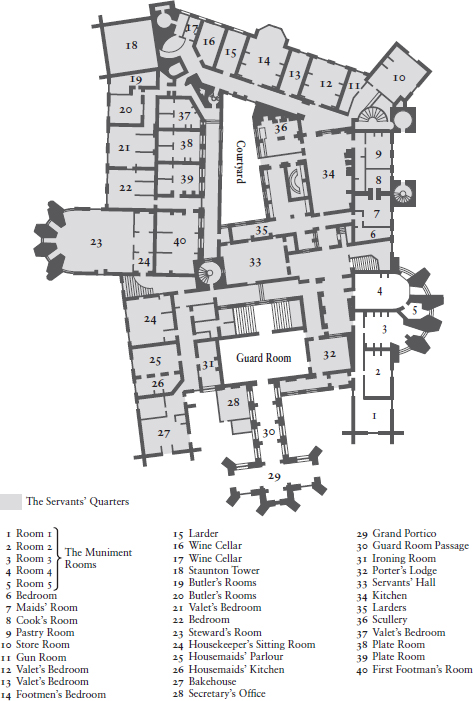
Fig 1. Belvoir Castle, Ground Floor
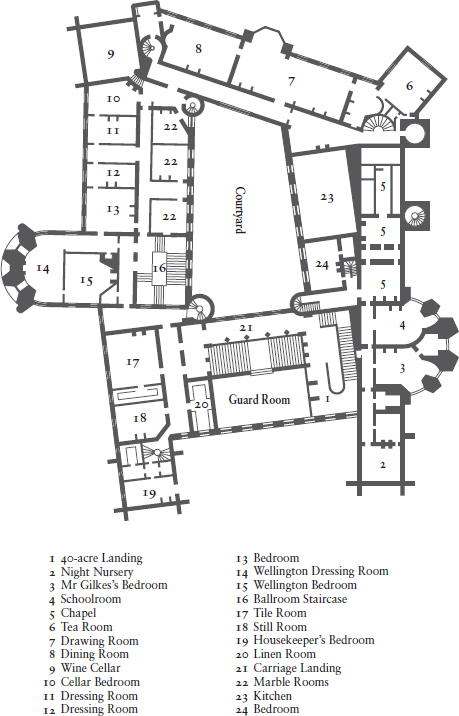
Fig 2. Belvoir Castle, First Floor
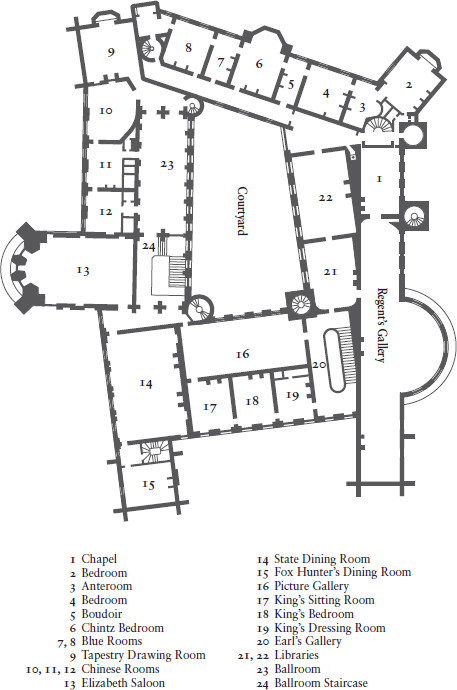
Fig 3. Belvoir Castle, Second Floor
PART I
1827 April 1940
1
Two doctors were already at the castle; a third, Lord Dawson, Physician to King George VI, was expected. It was mid-morning on Thursday 18 April 1940 and they were gathered at the entrance to a suite of rooms. The door leading into them was made of polished steel; the colour of gunmetal, it was the type used to secure a walkin safe.
The door was firmly closed.
The light from the dim bulbs along the windowless passage cast pools of inky shadows around the waiting figures. Piles of cardboard boxes were stacked against the bare stone walls. Marked Secret Property of His Majestys Government, they were secured with steel binding.
The doctors Dr Jauch, a GP from Grantham, and Mr Macpherson, an eminent chest specialist had been in and out of the rooms since dawn.
*
Shortly before eleven oclock, the first footman, dressed in an azure tailcoat and navy-blue breeches, escorted Lord Dawson across the Guard Room. A coldly sumptuous hall, it was the first point of entry to the 356-room castle. Rows of muskets, taller than a man, and hundreds of swords, their blades sharp-edged and glinting, lined its walls. From the vaulted roof hung the tattered remnants of regimental colours, captured in battle. Directly in front of them, a magnificent staircase swept to the state rooms on the upper floors; and yet, as the footman led the Kings doctor across the hall, he veered to the right, heading for its farthest corner. There, he ushered him through a discreet swing door. It marked the border between master and servant. They had stepped into the invisible world.
Behind the Guard Room, the entire ground floor was devoted to the smooth running of the Dukes household. A gloomy hinterland of fifty rooms, some cavernous, some no larger than a priests hole, it was where the servants lived and worked. From here, a network of passages coursed through the castle: hidden routes, which spiralled up the narrow turrets and towers to the splendid rooms above, enabling the servants to carry out their duties unobserved.
It was through this labyrinth of passages, deep in the servants quarters, that the footman conducted Lord Dawson, arriving at the steel door where the other doctors stood waiting.
*
They were at Belvoir Castle in Leicestershire. Built in the Gothic style and situated on a ridge eight miles from Grantham, it belonged to John Henry Montagu Manners, the 9th Duke of Rutland. Aged fifty-three, he was one of the richest men in Britain. Three years earlier, he had carried the Sovereigns Sceptre at the coronation. His family had lived at Belvoir since the eleventh century. Looking south from the castles Flag Tower, he owned the land as far as the eye could see.

